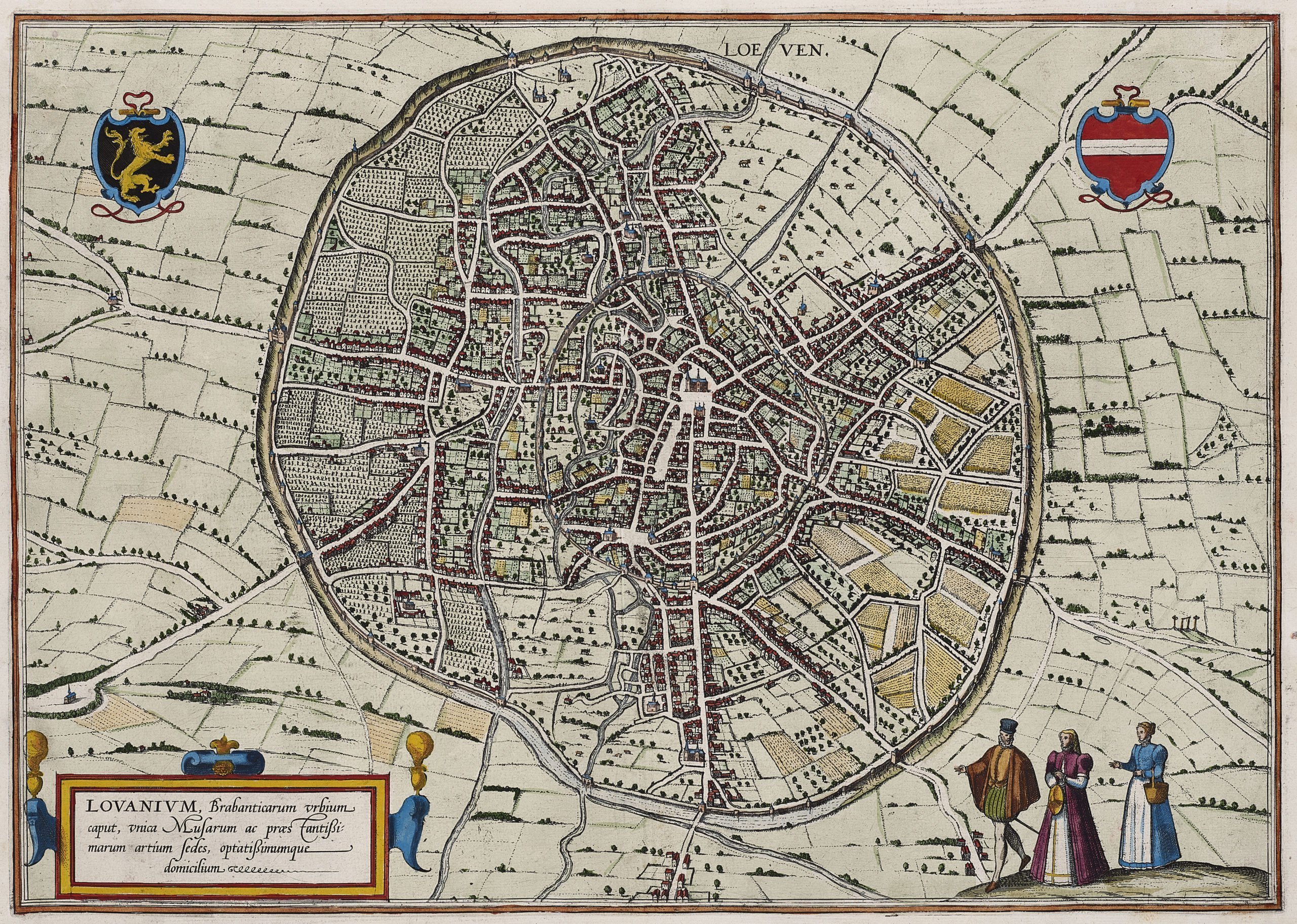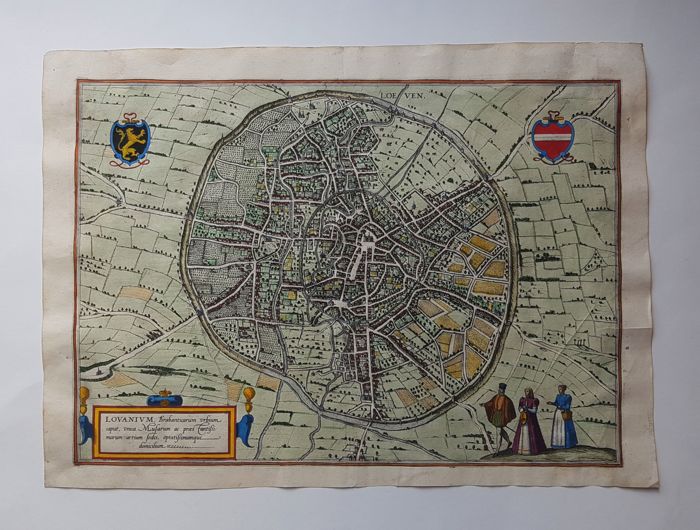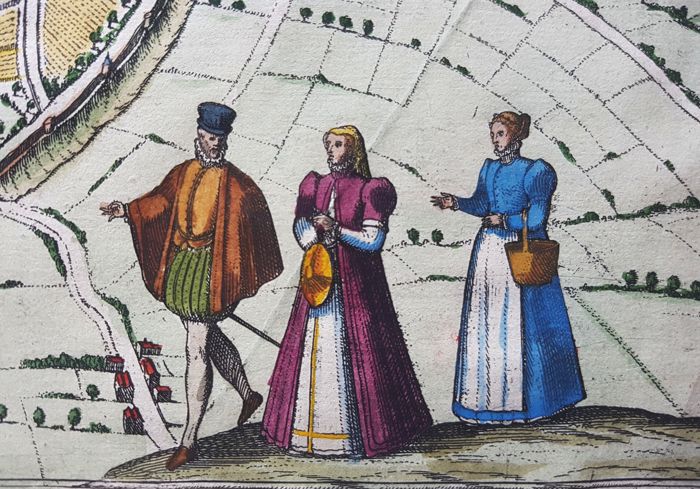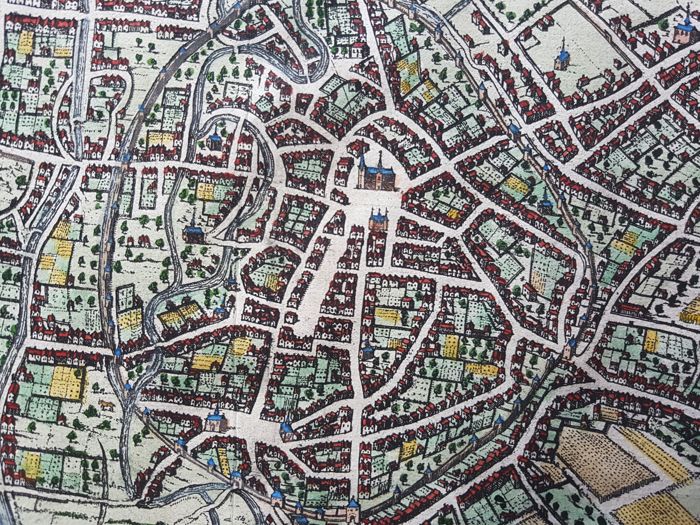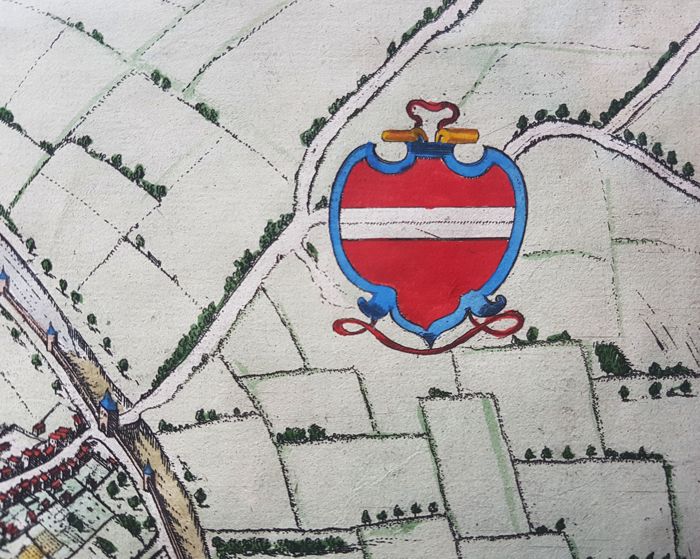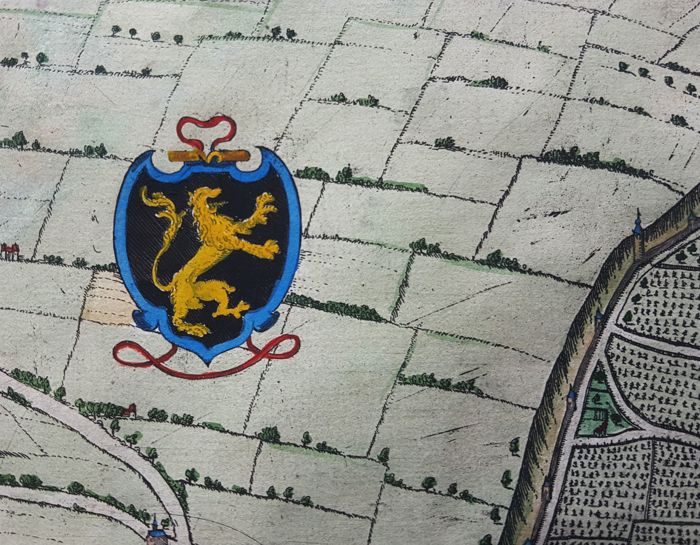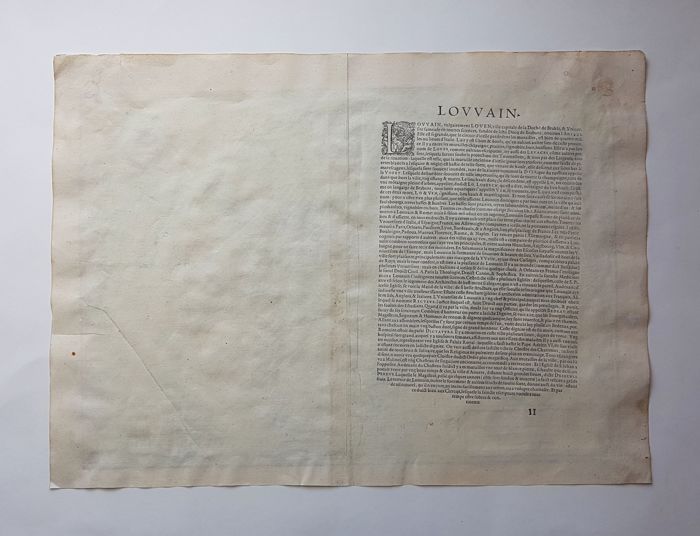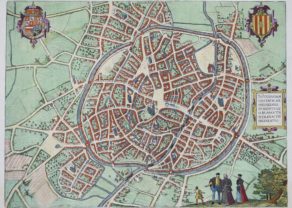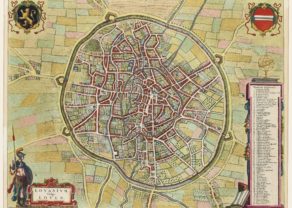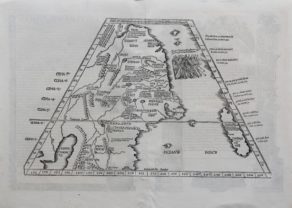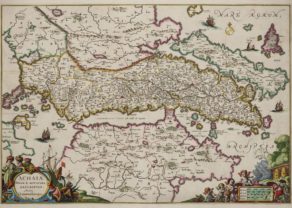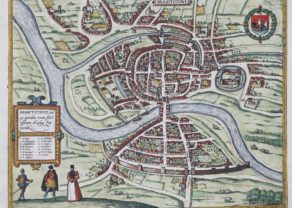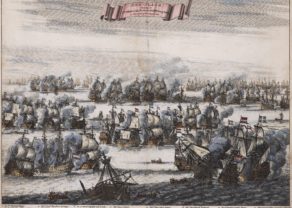Leuven – Lovanium, Brabanticarum urbium caput…
Detail
SOLD
Date of first edition: 1581-1588
Date of this map: 1581-1588
Dimensions (not including margins): 35 x 49,3 cm
Condition: Very good. Old colour. Strong print and clear image. Left bottom fold.
Condition rating: A
Verso: text in French
Map reference: Van der Krogt 4, 2319, State 1; Br. Hog., p. 216
From: Civitates Orbis Terrarum, Urbium praecipuarum totius mundi Liber tertius.
In stock
Leuven commented by Braun
“Louvain is the capital of Brabant and an important city of trade, but also the seat of learned men and the Liberal Arts. It was established around the year 1422 by John, Duke of Brabant, and is a large and liberal city. Inside the city walls it also has open meadows, vineyards, other large gardens, arable fields, orchards, fields, bushes, forest and pastures and very sizeable woods for walking in. There is virtually nowhere better suited to accommodate the muses and scholarship than this city.”
Translation of cartouche text: Louvain, capital of Brabant, unrivalled site of the muses and the most distinguished arts and sciences; a highly desirable place of residence.
Full title: Lovanium, Brabanticarum urbium caput, unica Musarum ac praestantissimorum artium sedes, optatissimimque domicilium
Taschen on Leuven
Seen from a detailed bird’s-eye perspective, Louvain appears less organized within its circular boundary than other cities and is criss-crossed by a network of labyrinthine medieval streets. Few prominent buildings are documented; only the church of Sint-Pieter on the large marketplace opposite the late Gothic town hall can be easily recognized at the centre. The aerial view clearly reveals the double city wall: while the inner wall surrounds the historical centre, the outer wall encloses not only streets and houses but also undeveloped fallow areas, fields and vineyards. The origin of the city’s name is disputed: one theory claims that the name was created from the combination of the words woods (lo) and marsh (ven). From AD 870 Louvain was the capital of a county that was elevated to a duchy in 1183. Conveniently located on the ancient Roman road that linked Boulogne-sur-Mer, Bavay, Tongeren and Cologne, Louvain was constituted a centre of cloth manufacturing in the Middle Ages. Despite intermittent economic problems from the mid-14th century onwards, the city was one of the centres of humanism during the Renaissance, in 1425 the distinguished University of Louvain was founded.
